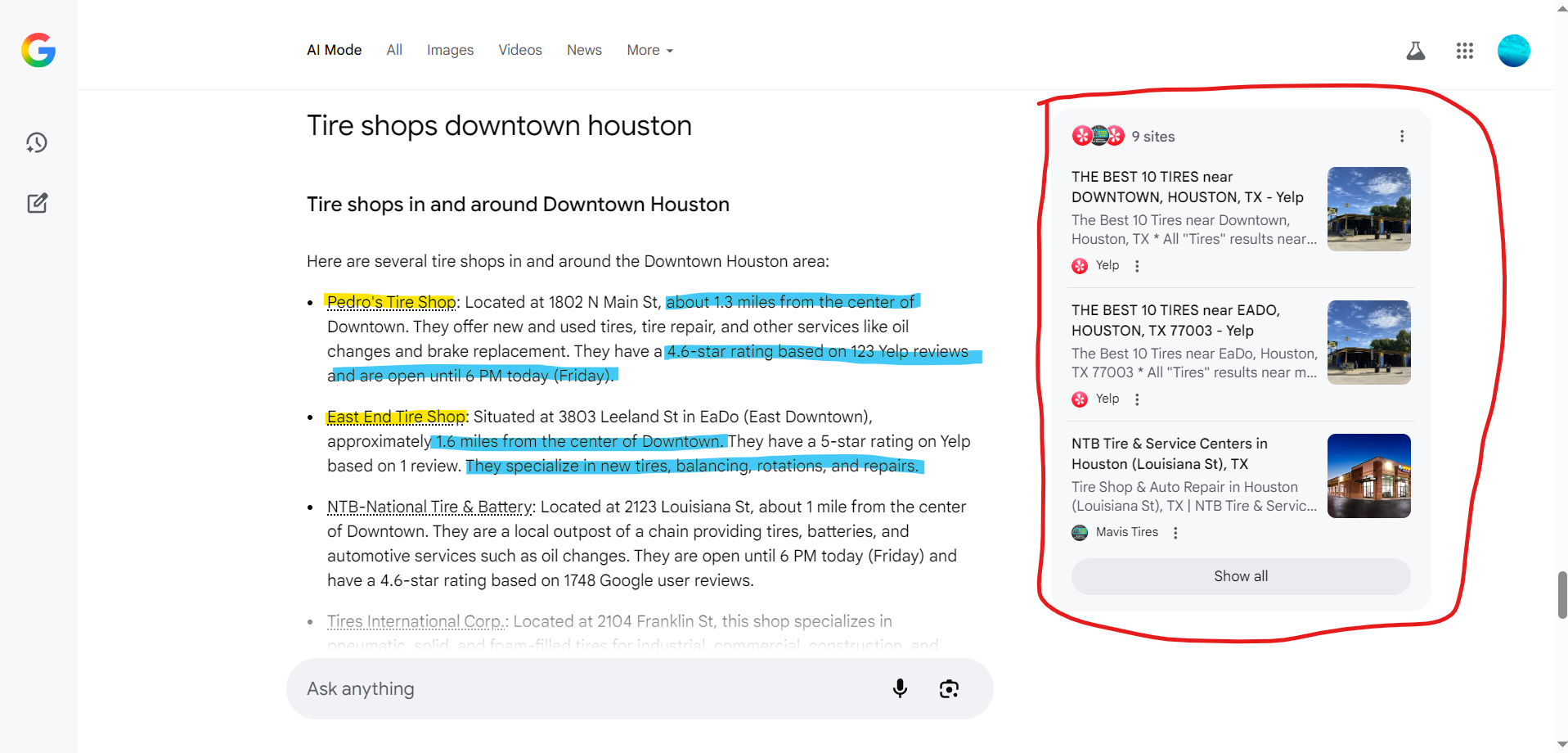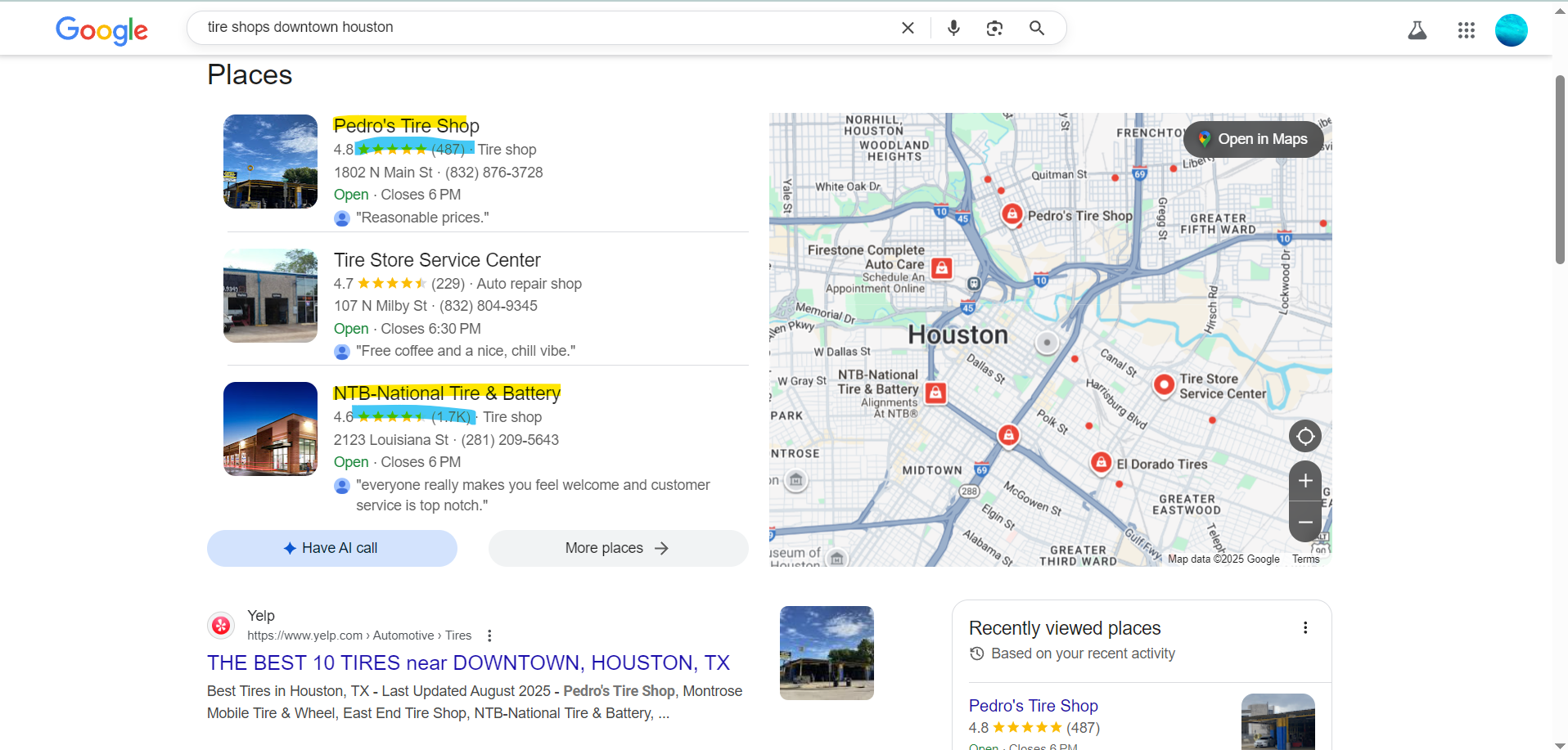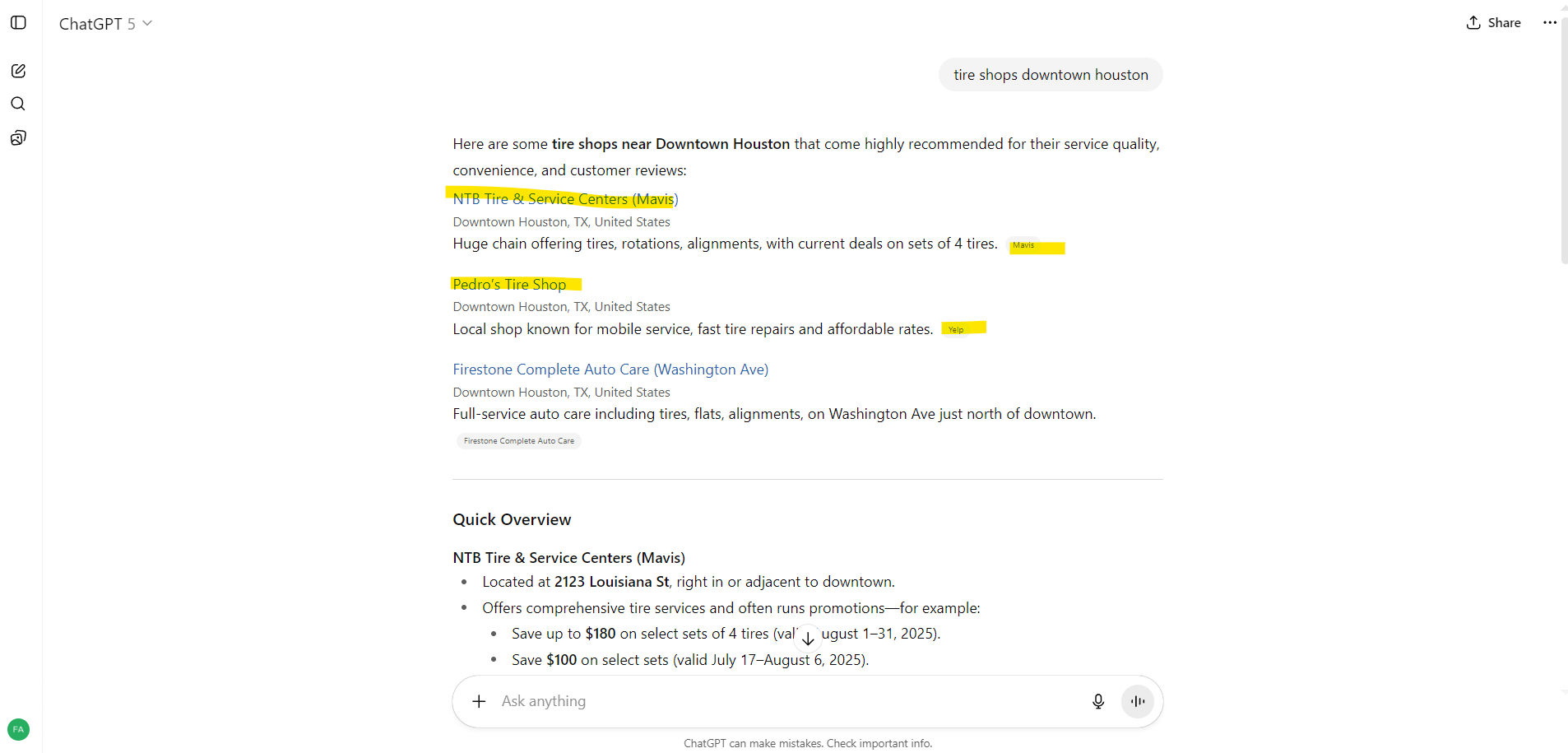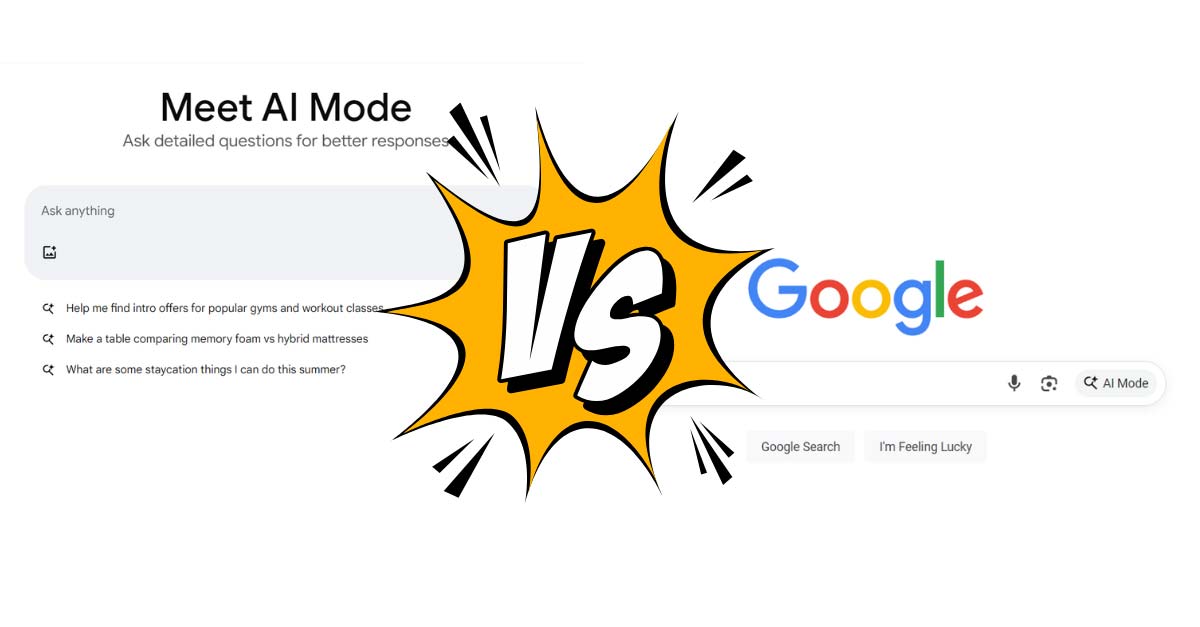Traditional Search vs. Google’s AI Mode: What’s the Difference?
Google has been pushing their new product “AI Mode” for quite some time now; however, as of recently, they have been pushing it much stronger than they have before. To summarize, AI Mode gives you a chat-like interface similar to other LLM models like ChatGPT, Claude, etc. It’s their solution to changing the traditional “Google Search”. We predict they will continue to push this product more as it develops, and it could possibly fully replace Google Search eventually.
Here’s a basic overview of their core differences:
Google’s Traditional Search
- Ranking Signals: Relies on algorithms like PageRank, RankBrain, and many others that evaluate backlinks, keywords, user engagement (e.g., click-through rates), and more to determine ranking.
- User Behavior: Users browse through results and click on relevant links, generating traffic for those websites—this drives SEO value.
- Data Source: Uses web crawlers, schemas, and other traditional internet tools to read through the website and share relevant information
- Personalization: Uses Cache, Cookies, and other tools for remembering your previous search history and preferences
Google’s AI Mode
- Under the Hood—“Query Fan-Out”: Instead of a single query, Google breaks your question into multiple related sub‑questions, searches them in parallel, and compiles synthesized answers.
- Personalization & Memory: AI Mode can personalize results based on context such as prior searches, location, device, and usage signals. Responses may differ between users.
- Multimodal Capabilities: It can process and integrate text, images, PDFs, and even video transcripts into its answers.
How Results Are Ranked or Presented Differently
In this example we are going to use “Tire Shops in Downtown” to understand how the information regarding local shops are being presented. In both of these examples, “Pedro’s Tire Shop” and “NTB” showed up on the top 3 results. However, there are some core differences in how the info was presented. Google’s LLM reads through reviews, what’s on the website, and synthesizes information to present to you. The sources of information is about the same as it is for Google Search. However, in Google Search, Google gives you the map and the business profiles immediately for you to review.
This means with AI Mode it will suggest to you and then show you the sources, where as with search it only shows sources. The AI Mode can potentially give more context which are relevant to your specific needs based on what it remembers about you as well.


When it comes to other LLM’s like ChatGPT, the information is not taken from Google but rather other open sources of internet. Tools such as Google MyBusiness and other Google Tools are not very well reflected in the search results.

They Might Feel Similar to You (Yet Aren’t the Same)
- Similar Sources: AI Mode still draws on the same web content and authoritative sources you're familiar with in traditional search—but synthesizes it more deeply.
- Different Output Format: Rather than navigating a page-by-page list, AI Mode gives a single, consolidated, chat-based answer, which may appear similar to scanning search results—but is fundamentally synthesized.
- Overlap in cited domains can make it feel like you're getting the same information, just presented differently.
What does the difference between AI Mode and Google Search mean for your website clicks and metrics?
One of the biggest shifts business owners will face with Google’s AI Mode is the way performance is measured. In the traditional search world, your primary success indicators were keyword rankings, click-through rates, and website traffic. You could track how often you appeared in the top results, how many people clicked your link, and how much of that traffic converted.
AI Mode disrupts this pattern in two major ways:
- Personalized and Opaque Results
AI Mode responses are heavily personalized based on the user’s search history, location, and preferences. This means two people searching the same term might see completely different AI-generated summaries and citations. Because of this, traditional rank tracking becomes unreliable—there’s no single “position” to measure anymore. - Zero-Click Experiences
Many AI Mode answers provide the complete information the user needs right inside the results, without them having to click through to your website. While this can reduce raw website visits, it also means your brand presence and perceived authority happen within the search result itself. This means your website clicks may reduce, because the LLM tools only summarize and synthesize the information that’s on your website instead of “presenting” them
What metrics should you use for your website in this new age of AI?
- AI Citation Frequency – How often your brand or content appears as a cited source in AI Mode responses.
- Visibility Share in AI Summaries – The percentage of AI answers in your niche that reference your brand.
- Brand Mentions Across Formats – Not just text mentions, but also how often your videos, images, or other content types are referenced.
- Sentiment and Context – How your brand is portrayed when cited—positive, neutral, or negative.
- Relevancy: Is your information relevant, accurate, and usable?
- Engagement from Indirect Discovery – Measuring leads, inquiries, or social traffic spikes that originate from AI-driven exposure rather than direct search clicks.
.jpg)
What This Means for Your Strategy
- Shift your mindset from “top spot” to “top source.” You’re not just competing for page-one rankings—you’re competing to be the content AI Mode trusts enough to summarize.
- Invest in brand authority and trust signals. Well-structured, accurate, and expert-level content is more likely to be cited in AI responses.
- Diversify your analytics stack. Traditional SEO tools will still help, but you’ll need solutions that can monitor AI Mode appearances, track branded queries, and analyze sentiment.
The future of search isn’t just about driving traffic—it’s about being the recognized authority in your space, wherever the answer is delivered.
Final Thoughts for Business Owners
While AI Mode and traditional Google Search may appear similar from the outside, they are fundamentally different in how they select and present content. AI Mode emphasizes synthesized, personalized, and multimodal responses, rather than a ranked list of links.
To stay ahead:
- Continue SEO best practices to ensure your content is noticed.
- Adapt for AEO/GEO: structure answers for clarity, richness, and relevance.
- Diversify content formats to become AI Mode-friendly.
- Build authority and brand trust—those that earn citations will continue to be visible.
- Track not just clicks, but inclusion in AI-generated outputs.
By aligning with how the digital landscape is evolving, you position your business not just to be found—but to be trusted, cited, and remain relevant in a zero-click world.
If you want your content and website to start showing up on LLM's, get in touch with us! We've helped many of our clients do the same and can do it for you as well
%20v2.png)



.jpg)


%20v2.png)